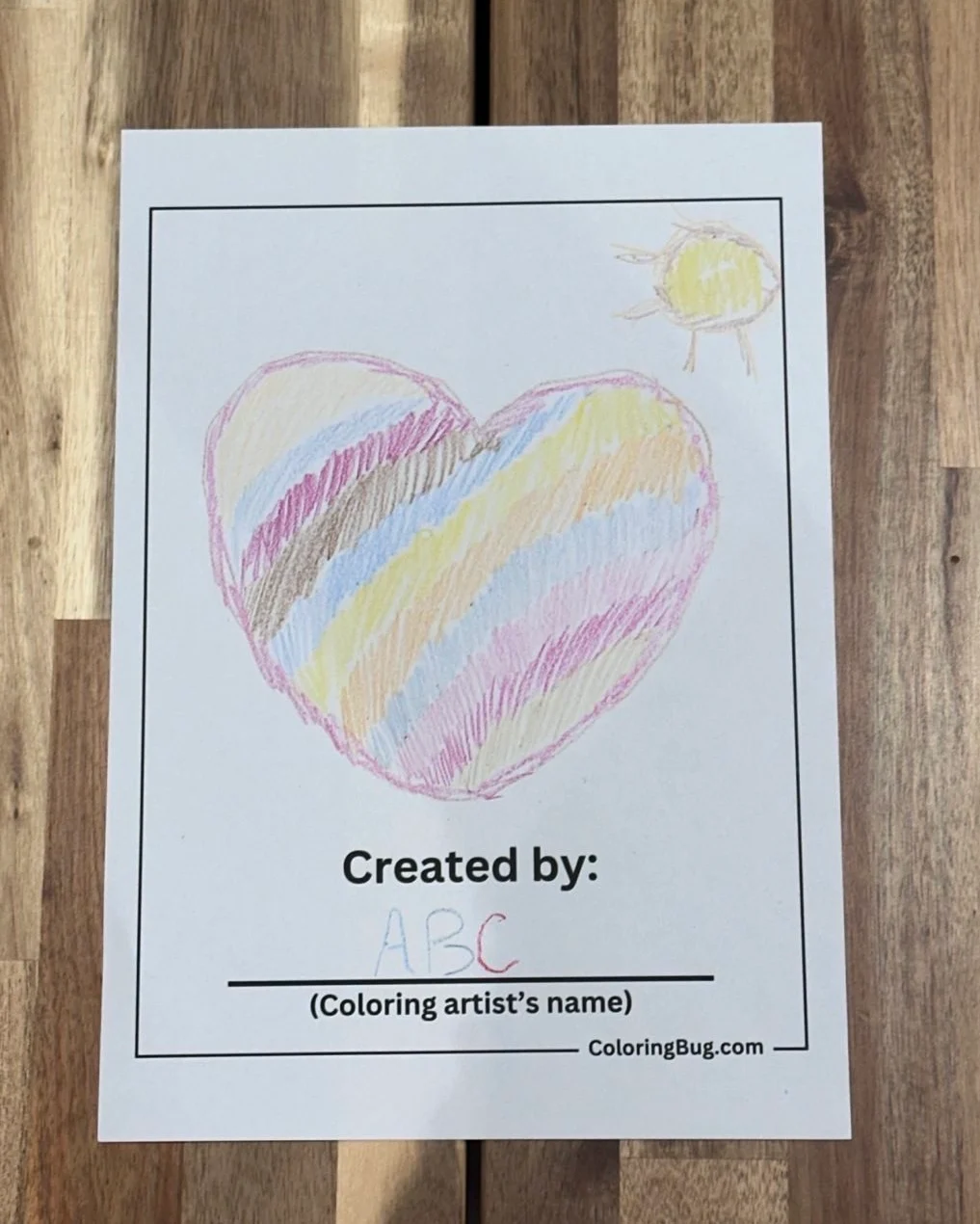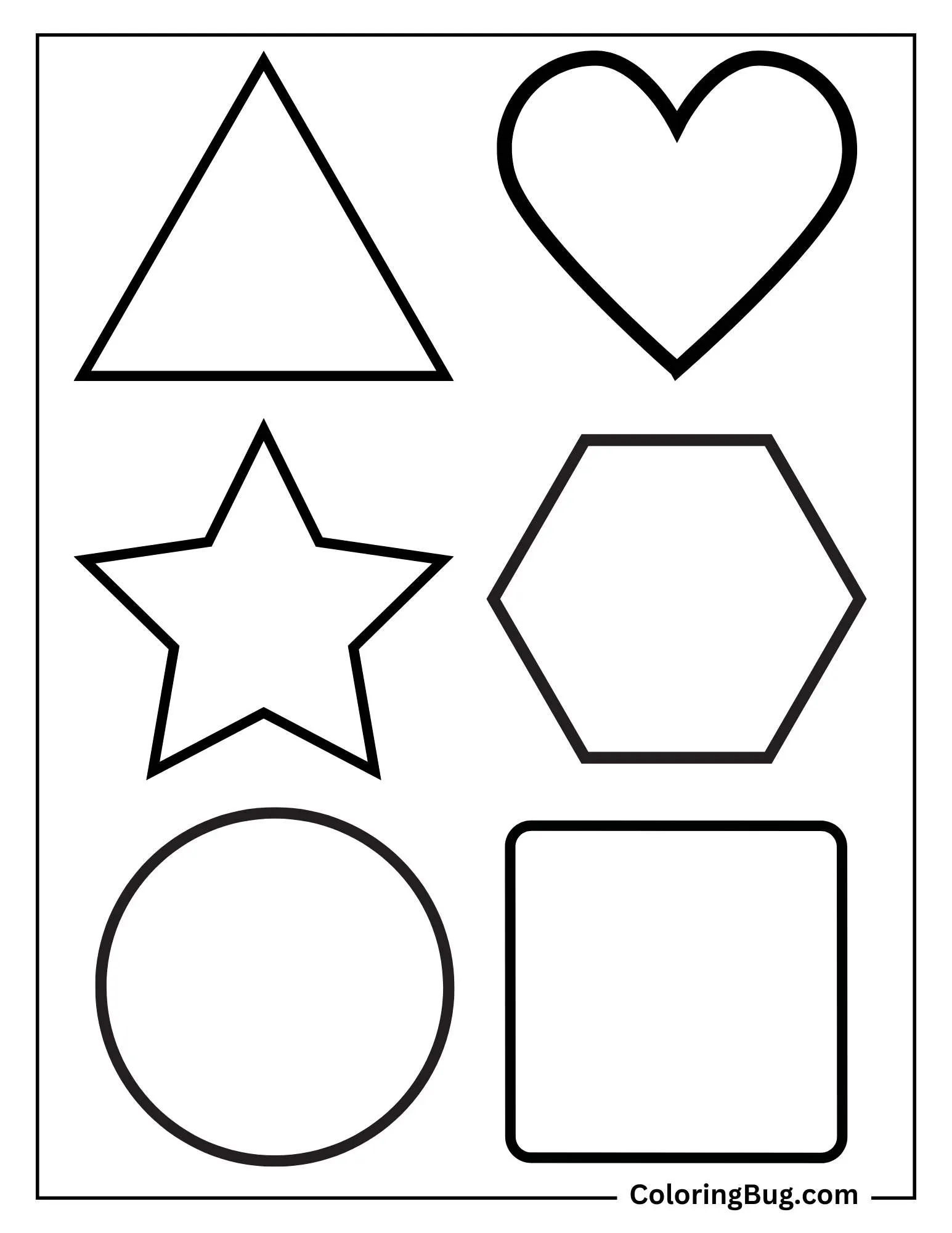Coloring is a wonderful way for children to express themselves, support the development of fine motor skills, and explore their creativity in a relaxed, enjoyable way.
Our tips are designed to help support early skill development, encourage creativity, and keep young artists engaged. Throughout this guide, you’ll find free printable pages to practice each tip, along with helpful visuals to demonstrate key techniques.
Review
“As a teacher, I truly appreciate the thoughtful attention to detail and the way the tips are designed to help children enhance their coloring skills in a fun, approachable way.”
– Alexandra Shore, Educator
Our coloring tips are just for fun and not intended to replace formal education or professional guidance.
1. Choose the Right Tools and Materials
Crayons: Look for crayons with ergonomic shapes (triangle or jumbo crayons) that fit well in small hands. Popular and reliable brands include Crayola, Faber-Castell, and Staedtler. You can often find quality options at craft stores like Michaels or Hobby Lobby and online at Amazon.
Colored Pencils: For slightly older kids who are working on grip control, colored pencils are great. Avoid very hard leads that break easily, and pick kid-friendly brands like Crayola or Prismacolor Scholar.
Washable Markers: If you’re worried about mess, opt for washable markers – especially for younger children. These help prevent permanent stains on clothes or surfaces.
Sourcing Tip: In addition to large retailers, check local art supply stores. They sometimes offer kid-focused starter kits with everything you need for coloring.
Show your child or class the difference between a regular crayon, a jumbo crayon, and a triangular one. They can hold each and decide which feels best. Note that jumbo crayons also come in a triangular shape for better grip and control.
Demonstrating how you hold and use each can give them confidence to try new tools.

2. Focus on Hand Grip and Posture
Proper Grip: Encourage a “Tripod Grip,” where the thumb and index finger pinch the writing instrument, while the middle finger supports it from underneath. This allows smoother control.
Posture: Have children sit up straight at a table with feet on the floor (if possible). Keep coloring sheets at a comfortable angle so the arm isn’t strained.
Sourcing Tip: If a child struggles with gripping utensils, look into pencil grips or specialized ergonomic crayons available at teacher supply stores or online specialty retailers.

3. Outline or Trace Before Filling
Why Outline: By tracing the edge of a shape lightly before filling it in, children get a “barrier” that helps keep color inside the lines.
Light Strokes: Make sure they don’t press too hard on the outline. A gentle outline can be overlapped by shading or blending later.
Give it a try with our simple and irregular shape coloring pages available below! These free printable PDFs are formatted for US Letter (8.5” x 11”) size, but also work at A4 (210mm x 297mm) size, making them perfect for at home or in the classroom.
Just like this:


4. Take It Slow for Accuracy
Slow and Steady: Remind children that coloring isn’t a race. Encourage them to fill in small sections at a time.
Support: If a child’s hand gets tired, allow brief breaks or use smaller coloring sheets to avoid fatigue.
Sourcing Tip: Shorter coloring exercises (like single shapes or small images) can be found online. Short sessions with smaller designs can reduce frustration.
Try using our free flower coloring page below (US Letter size, but also works for A4) to slowly color in each petal, helping kids to practice staying within the lines.
Just like this:

5. Use Pressure to Vary Shade
Soft vs. Hard Pressure: Demonstrate how pressing lightly creates a faint, pastel-like color, and how pressing harder produces a bold, bright hue.
Layering: Teach children to start softly and layer color to build intensity. This prevents breaking crayons or wearing down pencil leads too fast.
Sourcing Tip: Select coloring books with large shapes and blank spaces for experimenting with shading, found at big-box stores or online marketplaces. Some specialized coloring books even have guides on shading and blending.
Use our free coloring page below (US Letter size, also compatible with A4) to practice soft and hard pressure coloring. This hands-on activity helps demonstrate shading techniques and lets kids experiment with the different techniques.
Just like this:

6. Experiment with Simple Shading and Highlights
Two-Tone Shading: Pick two hues of the same color – one lighter and one darker. Color the central area with the lighter shade, then shade around the edges with the darker color.
Highlights: Leave small white spots in the design to create the illusion of light hitting the object.
Sourcing Tip: Look for children’s coloring books that feature gradient practice or basic shading techniques. Bookstores often carry step-by-step beginner art books.
Try shading our printable dinosaur coloring page below (US Letter size, also works for A4) in two tones. The neck and stomach lines provide the perfect opportunity to use a darker shade, while the rest of the body can be colored in a lighter tone for a realistic effect. The spots can also be darker.
Just like this:

7. Master Small, Gentle Strokes
Consistency: Encourage using short, controlled strokes in one direction for a smooth appearance.
Avoid Scribbling: While scribbling is normal for very young kids, you can gently guide them to try more organized strokes when they’re ready.
Practice short, controlled strokes with our printable zebra coloring page below (US Letter size, which also works for A4 size). Use the practice area first, and when ready, try completing the zebra – starting with the stripes can make shading the rest easier!
Just like this:

8. Try Blending Different Colors Together
Color Mixing: Show how two different shades – like yellow and blue – can mix into green if lightly overlapped. This can be fun and educational about color theory.
Gently Overlap: Remind them not to press too hard to avoid muddy or patchy blending.
Color blending is harder with crayons compared to colored pencils or markers, but it’s still possible with the right techniques. Crayons have a waxy texture, making smooth blending more challenging.
To improve blending: Try layering colors lightly and gradually building up depth, or use a white crayon to soften transitions. Rubbing a tissue or cotton swab over blended areas can also help smooth out harsh lines.
Sourcing Tip: Look for children’s color theory books or small, free worksheets online that teach color mixing. Many children’s activity books include pages dedicated to “primary” and “secondary” color experiments.
Use our free rainbow coloring page below (US Letter size, also works for A4) to practice blending colors smoothly, showing how colors like red, orange, and yellow transition seamlessly using overlapping strokes.
Just like this:

9. Keep the Page and Hands Clean
Prevent Smudging: Encourage children to rest a scrap piece of paper under their drawing hand. This helps keep their arm from rubbing over freshly colored areas.
Tidy Workspaces: Remind kids to put crayons or markers back in their box when done to avoid losing them or mixing up colors.
Sourcing Tip: Kid-friendly aprons or smocks can be found on sites like Oriental Trading if you want to protect clothing. Mess-free coloring pages (like Color Wonder by Crayola) are also a neat option for minimal clean-up.

10. Have Fun and Be Creative
Try New Techniques: Encourage swirl patterns, rainbow coloring, or mixing colors in unexpected ways. Creativity should have no limits! Kids can add extra drawings or decorate outside the lines to make the artwork special.
Sourcing Tip: Encourage them to invent their own coloring page by drawing simple shapes. You can also find blank “create your own” pages online – perfect for letting the imagination run wild.
Print our blank coloring page template below, designed for US Letter size (also works for A4). Create shapes, drawings, or anything you imagine, and personalize it by having the artist fill in their name!
Just like this:

Additional Inspiration and Resources
Our free 10-lesson coloring course for ages 3-6 has been reviewed by an experienced educator. The course includes easy-to-follow steps, printable coloring pages, worksheets, and optional grading sheets.
Feeling more confident after practicing our essential tips? Join our free monthly coloring challenge to track progress and watch skills improve over time! By completing all four pages, your child will earn a printable Champion Certificate to color and celebrate their achievement.
Have an idea for a coloring page but can’t find it online? Request our design team to create it for you – free of charge!
Additional resources:
Online Coloring Communities: Websites like ArtForKidsHub.com offer guided drawing and coloring tutorials tailored to kids.
Library Visits: Local libraries often have shelves of coloring books for different age ranges. They might also host coloring events.
Local Art Classes: Some craft stores or community centers hold short workshops for children where they can learn and experiment with new coloring techniques in a social setting.
By focusing on these techniques and exploring the many resources available – both online and offline – you can help children unlock their full creative potential in coloring.
Did our tips help? Help us release more guides by mentioning us and sharing this page with others – online or in person! You can also support us by purchasing and reviewing our new coloring books. Thank you so much for your support! The Coloring Bug Team
Share your suggestions in the comments below – we’d love to hear your thoughts!









